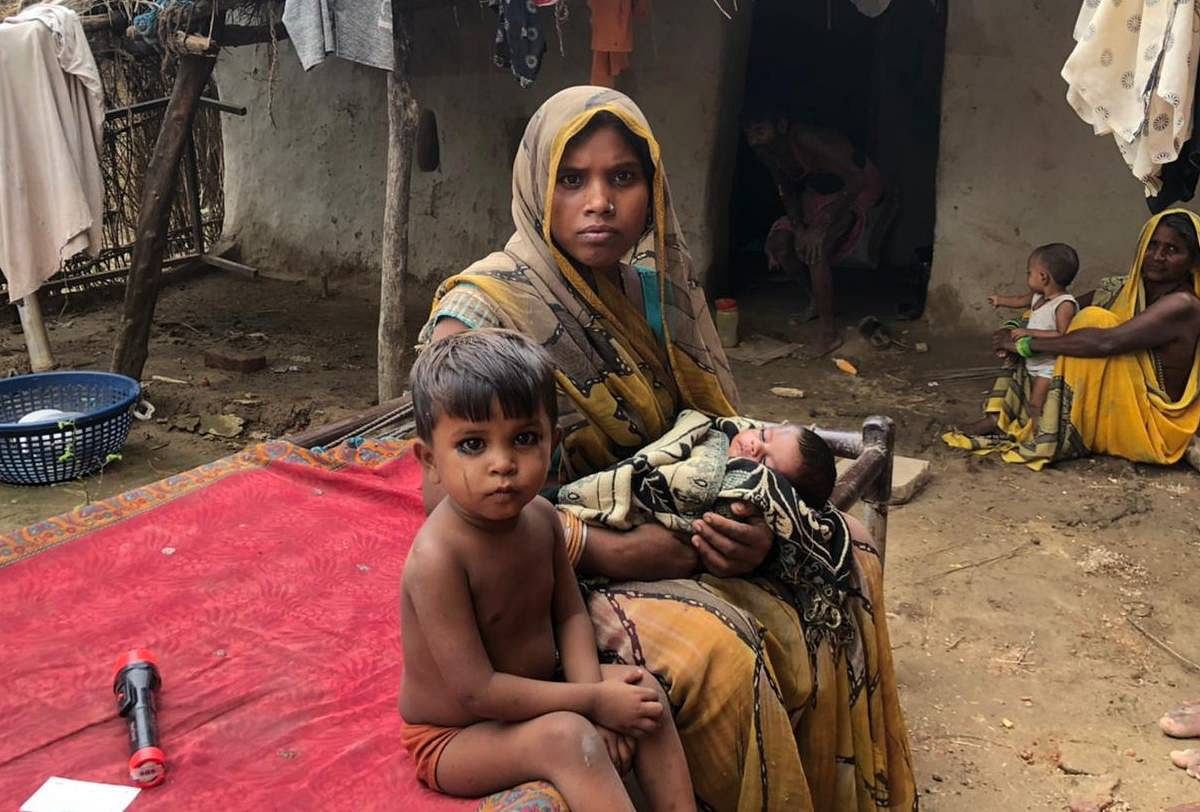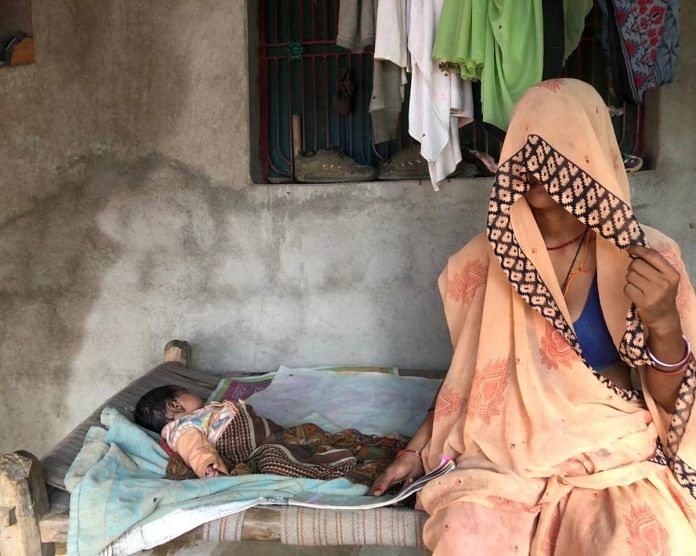Chitrakoot: In the early hours of 9 July, 23-year-old Radha Devi started experiencing labour pain. Her family made a few frantic calls to an ASHA worker but she wasn’t available.
Radha, who stays in Karvi block of Uttar Pradesh’s Chitrakoot district, is one among 55 women in the district who could not access institutional delivery in July this year, district health department data shows.
According to the health officials, of these 55 women, 23 did not even have access to a skilled attendant or any medical kit during labour and childbirth. This meant that either a relative or midwife operated on the women during childbirth.
In the case of Radha, Soni Tripathi, the ASHA worker who was contacted by the family, said she was accompanying another pregnant woman that day to a community health centre for vaccination.
“They called me. I had assured them that I would get free by 2pm but her (Radha’s) labour pain was extreme. By the time I checked again, she had delivered a baby girl at home,” Tripathi told ThePrint.
“We called a midwife because the ambulance didn’t arrive on time,” said Radha, sitting next to her one-month-old child on a cot in the verandah.
Drop in institutional deliveries
According to official figures from Chitrakoot district’s health authorities, accessed by ThePrint, the district registered 1,179 institutional deliveries in May 2019, but the number dropped to 1,086 in May 2020. For the same month in 2021, the number reduced further to 1,016.
The data for June shows a similar decline. In June 2019, there were 1,420 institutional deliveries, which dropped to 1,342 in 2020, and 1,232 in 2021.
From April to June this year, when the second Covid wave was at its peak, Chitrakoot registered 196 home births. The figure stood at 955 for 2020 and 965 for 2019.
District health officials cite the pandemic, lockdown and vaccination drive as the reasons behind the drop in institutional deliveries.
“There was a complete lockdown. Our workforce was engaged with Covid management. The ambulance sometimes reached late. Also, even after labour pains have started, families wait till the last minute to approach an Asha worker or Community health centres or district hospitals. This makes things difficult,” District Programme Manager of Chitrakoot, Ram Kishore Karwariya told ThePrint.
The drop in institutional deliveries has set alarm bells ringing among the district administration. During its review meeting held on 2 August, the district officials asked ASHA and anganwadi workers to find out the reasons behind the drop and trace families that saw child births at home.
Also read: Patiala ASHA worker’s kids blame her for ‘bringing’ virus that killed dad. But duty calls
No routine check-ups or maternity benefits
Nearly two kilometres away from Radha’s house, 32-year-old Savitri Devi gave birth to her fourth child on 10 July. Her husband, a migrant worker, Gore Lal, returned from Punjab in May.
Holding the newborn in her arms, Savitri was surrounded by her three daughters when ThePrint visited her. Savitri said she couldn’t get her name registered for availing maternity benefits at a government health facility either in Punjab or UP.
“We did not know how to get her name registered in Punjab. Due to the lockdown, I lost my employment and had to return. There was no mechanism (to register her name) here either,” Gore Lal said.
Savitri’s family tried calling the ambulance in the absence of a skilled attendant. But the ambulance never turned up and eventually, she decided against getting admitted into a hospital fearing she might have to pay the hospital bill.
“All my daughters were born in a hospital in Punjab but we had to pay some amount there. This year we lost employment. So I refused to go to the hospital,” said Savitri. Both Savitri and her husband worked as daily wage labourers in Punjab.

Not having been monitored by an ASHA worker or an auxiliary nurse midwife (ANM), Savitri also missed on routine check-ups and iron and calcium tablets. Her newborn son was not given OPV-0, Hep-B and BCG injections within 24 hours of birth. Radha’s daughter, too, wasn’t administered these vaccines.
Radha also missed her fourth routine checkup during her pregnancy because the ANMs were on vaccination duty, she said.
Her MCP (Mother and child protection) card shows her check-up was done on 13 March, 10 April, and 5 May. According to the health ministry guidelines, four routine check-ups are mandatory.
Meanwhile, 23-year-old Suman, who lives in the same village and is in her ninth month of pregnancy, could go for mandatory check-ups only twice — 12 June and 10 July. Her expected due date is 17 September but she has not been counselled by the ASHA or ANM yet.
“The Poshahar is irregular too. My checkups are delayed,” she told ThePrint.
Talking about the challenges faced by the health authorities, Karwariya, said, “Over the past few years, we have witnessed a rise in the institutional deliveries. Chitrakoot has 70% institutional deliveries. Yes, there has been a drop during the pandemic and the numbers are concerning. The routine check-ups were missed as our ASHA, ANM and anganwadi workforce was overburdened with the vaccination drive.”
Not a single female gynaecologist
Chitrakoot, an aspirational district with a population of around 9.91 lakh, does not have a single female gynaecologist. The only male gynaecologist at the district hospital is often overburdened.
The district has 910 Asha workers, 959 anganwadi workers, and 134 ANMs. There is only one ANM available for every 5,000 women, and only one ASHA worker for every 1,000 women.
The district saw 11 maternity deaths in 2019 and 18 in 2020. Till July this year, the district has registered five maternity deaths.
A district health official who did not wish to be named said, “It is our ASHA cadre which counsels and motivates a pregnant woman and brings her to the CHC or Sadar hospital. Institutional delivery is our priority but due to coronavirus, this workforce was engaged with Covid management.”
Also read: Fearing Covid, 3 Andhra women ‘self-isolate’ for 15 months, come out malnourished & depressed



